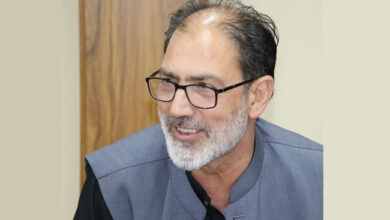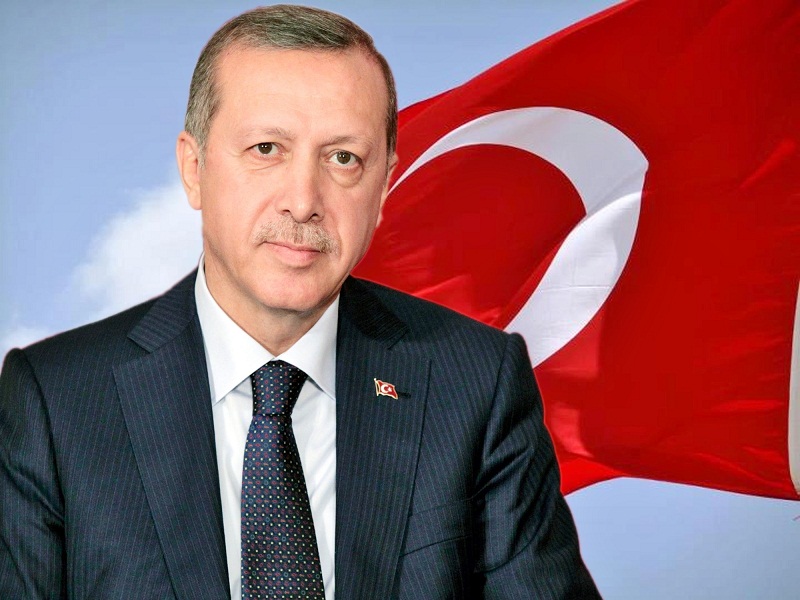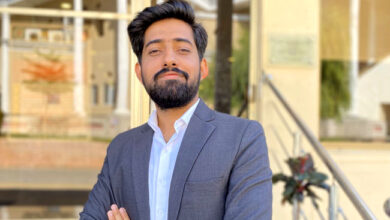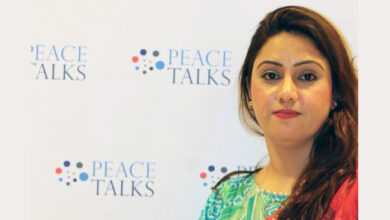Human Rights Violations & Abuses in Myanmar and the Role of the Human Rights Council
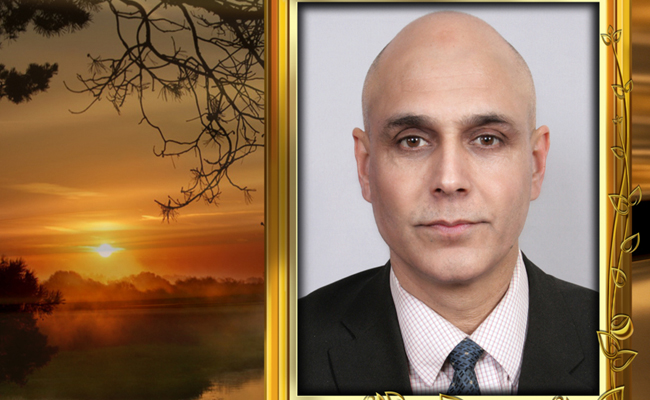
Written By: Qasim Swati (Manchester, UK)
Also known as Burma, the Republic of the Union of Myanmar is a country, situated in Southeast Asia. Bordered by Thailand and Laos to its east, India and Bangladesh to its west and China to its north and northeast, Myanmar has a population of about 54 million, as of 2017, and is 676,578 square kilometres (261,228 square miles) in size.
Despite holding the membership of the Association of Southeast Asian Nations (ASEAN) since 1997 and boasting of being peace-loving, as 87.9% of the people of the country are Buddhists, who are supposed to believe in non-violence and avoid killing or harming any living thing, as being the first of the five precepts that all Buddhists should follow, according to their religious belief), ‘Myanmar has been regarded as one of the worst in the world, in connection with human rights issues, abuses and violations, under its military regime’ according to “A Special Report to the 59th Session of the United Nations.” Human rights have been violated in Myanmar under its military regime (officially known as the State Peace and Development Council) which controlled power under the rule of Senior General Saw Maung (the founder of the State Law and Order Restoration Council, the former name of the Burmese Military Regime) in 1988.
Human rights abuses (perpetrated by the Burmese soldiers and other groups in Myanmar) have been documented and condemned, repeatedly, at a great scale, by various human rights organisations, like Amnesty International, Human Rights Watch and the American Association for the Advancement of Science. As such, the Amnesty International (1998) reports that “Force labour, human trafficking and child labour are common (in Myanmar).”
To make sure the thorough and full accountability for perpetrators and justice for the victims of the recent human rights abuses and human rights violations by security forces and military in Myanmar, a Fact-Finding Mission was founded and run by a three-member committee of the United Nations Human Rights Council in March, 2017 (OHCHR – Myanmar FFM Members: www.ohchr.org), but, unfortunately, the government of Myanmar neither worked with the Fact-Finding Mission nor did it permit or allow the UN Special Rapporteur (someone investigating on behalf of the United Nations, having a particular thematic mandate or specific country from the United Nations Human Rights Council within the scope of ‘particular procedure’) on the human rights situation in Myanmar into the country (OHCHR – Myanmar refuses access to UN Special Rapporteur:www.ohchr.org).
There is a huge list of atrocities, perpetration, violations and abuses of human rights, planned, conducted and committed by the Burmese security forces, particularly the Tatmadaw (the Burmese military), some Buddhist religious extremist or fanatical groups, militants and other inhuman elements against a certain population of the country. Myanmar has a long history of violating and suppressing the political, religious and social rights of innocent people.
The government of Myanmar has a very notorious record when this comes to the freedom of speech, political freedom and the freedom of press. A large number of politicians have seen imprisonment, house arrest and other victimization and oppression, conducted by the authorities in various times. Similarly, like other political leaders in the country, the current and the 1st State Counsellor of Myanmar, Aung San Suu Kyi, also remained under house arrest for about 15 out of the 21 years from 1989 to 2010, thus, getting the reputation as one of the most prominent political prisoners of the world in her political career of life.
Likewise, there is no place for freedom of speech in Myanmar, as anyone is scared of the torture of the government, if someone is reported to the authorities by its spies and informers. This situation of human rights abuse in Burma has been described by Brad Adams (the Director of Human Rights Watch’s Asia division, while describing the human rights situation in 2004, as: “Burma is the textbook example of a police state. Government informants and spies are omnipresent (present or having an effect everywhere at the same time). Average Burmese people are afraid to speak to foreigners except in most superficial of manners for fear of being hauled in later for questioning or worse. There is no freedom of speech, assembly or association,” (Statement to the EU Development Committee: Human Rights Watch, 30 – 8 – 2004: https://hrw.org/english/docs/2004/09/01/burma9290.htm.)
In the same way, the Burmese government strictly controls the media of the country and all journals, publications and newspapers have to undergo a strict censorship process before publication, as all these are controlled by the Ministry of Information.
Besides the lack of freedom of speech, press and political freedom, the other human rights, violated by the authorities in Myanmar, include such human rights abuses, as human rights violations against women and girls (including ill-treatment, disgrace, rapes and gang-rapes, taking of sex slaves by the military, forced marriage, sex trafficking of women, girls and children); abuses of children (such as using the children as child soldiers, forced labour and other inhuman treatment); crimes against humanity, like marking or targeting certain ethnic minorities for extermination or Burmisation of the Shan (a Thai ethnic group of Southeast Asia, mainly residing in the Shan State of Myanmar), the Karen/Kayin/Kariang or Yang people (referring to some Sino-Tibetan language-speaking ethnic groups, living, mostly, in Kayin State, southern and south-eastern Myanmar) and the Karenni/Kayah or Kayahi (a Sino-Tibetan people, residing in Kayah State of Myanmar).
The violence of the Burmese authorities against Christian communities, like the Kachin, also cannot be ignored, as such Christian people, living in Myanmar, are tortured, agonised and maltreated in various ways.
Above all, the persecution of the Rohingya Muslims is a long and shocking story in the history of Myanmar, which goes back to as long as 1978, as described by Amnesty International in these words: “The Muslim Rohingya people have continued to suffer human rights violations under the Burma junta since 1978, and many have fled to neighbouring Bangladesh, as a result.” (Burma – The Rohingya Minority: Fundamental Rights Denied, Amnesty International, 2004: https://www.amnesty.org/en/documents/asa16/005/2004/en/).
The recent sectarian conflicts and clashes between Buddhists and Rohingya Muslims in the Western Rakhine State of Burma has left a dark chapter in human history. The mass murders, massacre and planned genocide of the Rohingya community, the rapes and gang rapes of their women and girls and even children and some men at the hands of the security forces and other authorities of the country; cleansing of the Rohingya population by the government of Myanmar and other state-sponsored perpetrators, like some of the Burmese Buddhist religious fanatics; blocking of any humanitarian support and help to the Rohingya community by some monks’ organisations; forced displacement of hundreds of thousands of Rohingya Muslims to Bangladesh, and burning of homes and destroying other properties of the Rohingya community are some of the horrific examples of human rights violations, war crimes, genocide and crimes against humanity.
Not only Muslims and Christians face persecution in Myanmar, but other religious communities, for instance, Hindus, are also not safe and secure there. It is estimated that about 300,000 Indian ethnic people (Hindus) were expelled and forced to leave Burma by the Burma Socialist Programme Party under Ne Win between 1963 and 1967 after the country got its independence from Britain on 4 January, 1948.
As a result of the continuous human rights violations in Myanmar, especially since 2011, the Human Rights Council decided to come to a conclusion, in association with the unending sufferings of the innocent people of Myanmar, and, thus, established an Independent International Fact-Finding Mission, with a view to focusing on the situation in Rakhine, Kachin and Shan States of Myanmar, going back to the atrocities perpetrated against the victims, including the violation and breach of their fundamental freedoms, since 2011. After its 15-month continuous research and assessment on the human rights situation in the three States of Rakhine, Kachin and Shan in Myanmar, the International Independent Fact-Finding Mission on Myanmar released its full 440-page account of its findings in Geneva, on Tuesday, 18 September, 2018.
The mission has clearly concluded that the role of the main perpetrator, in committing these violations, has been played by the security forces, specifically the military of the country that can amount to war crimes, crimes against humanity and genocide, according to international law.
The commission has used both primary as well as secondary sources of information, along with other methods of collecting the relevant data, while conducting in-depth face to face meetings (interviews) with as many as 875 victims and eyewitnesses. While collecting the required information, the mission had to visit a number of countries, including the United Kingdom, Thailand, Malaysia, Indonesia and, mainly, Bangladesh. The list of human rights violations and abuses, prepared by the mission, is a detailed description of persecution, torment, victimization and sufferings, experienced by the victims, which needs more time to be fully discussed, however, some of such serious, grave, unpleasant, appalling, horrific and dreadful situations are described, as follows:
Human Rights Violations and Rakhine State:
Located on the western coast, with an area of 36,762 square kilometres, Rakhine is a state in Myanmar and formerly known as Arakan. The Rakhine Buddhists and the Rohingya Muslims are the two largest ethnic groups in the state.
According to what the mission has concluded, the Tatmadaw has played the role of the main perpetrator in the crisis, going on in Myanmar for the last so many years. The Tatmadaw is the name given, officially, to the armed forces of Myanmar (the Army, the Navy and the Air Force), and it is administered by the Ministry of Defence. During the conflict, Rakhine men, women and children were used by the Tatmadaw for compulsory or forced labour. Such other human rights abuses, like violations of the rights to life, to property, to physical and mental integrity, forced evictions via land confiscation, arbitrary arrest and detention were also carried out by the Tatmadaw. Even the soldiers of the Tatmadaw did not spare the female population and subjected Rakhine women to sexual violence, too, as a sort of forced labour.
As reported by the mission, the Rohingya have been put to continuous systemic persecution and oppression, where they have no human rights to enjoy as humans in their own State of Rakhine. They live their lives like being in a cage or prison and there is a strict ban on their free movement of life.
Despite living in the country for generations, the Rohingya are not considered or accepted as the citizens of the country, where they have, practically, become stateless and have no country or place of abode, in reality.
Besides arbitrary arrest, forced labour, sexual abuse, common extortion and theft of the Rohingya by the security forces for several decades, the government has introduced a discriminatory travel authorization system for them which is a great barrier on their right of free movement, as mentioned earlier between villages and townships and outside Rakhine. Anyway, these are not the only obstacles faced by the Rohingya in their day-to-day lives in their own homeland, as there are such other discriminatory restrictions in place, as the denial of equal access to birth registration for Rohingya children, limits on the number and spacing of children and procedures for marriage authorization, as well.
Being a watershed (an event or period marking a turning point in a situation) or a decisive moment in the history of Rakhine State, the violence in 2012 was not, actually, the outcome of inter-communal conflict between the Rakhine and the Rohingya, but it was the result of a planned campaign of hate and dehumanization of the Rohingya, conducted by certain forces, such as some officials and influential personalities or figures, radical or fundamentalist Buddhist monk organizations and the Rakhine Nationalities Development Party (RNDP). The campaign used different methods for promoting hate and disgust against the Rohingya and the Muslims in the forms of anti-Muslim and anti-Rohingya rallies, statements in public, publications and even encouraging people to boycott shopping from Muslim shops.
The 2012 violence was one of the dark chapters in the history of Myanmar, during which the security forces did not try to stop the violence, but fully participated and played their role as an accomplice (a person who helps another commit a crime) for deteriorating the situation, instead. A large number of the Rohingya were injured and killed and their properties destroyed and houses burned. Mass arbitrary arrests of the Rohingya were made and large groups were taken to Buthidaung prison by security forces, where they were subjected to inhuman and disgracing treatment and behaviour by the management and prison guards.
The curfew was imposed by the township authorities in Rakhine State, public gatherings of more than 5 people were banned and religious freedom (particularly of Muslim population) was seriously impacted, which stopped people from praying in mosques in congregation.
The violence resulted in the displacement of over 140,000 people and, even for up to six years after the violence ended, left some 128,000 Rohingya and Kaman segregated and restricted in sites of displacement and camps, where they were not able to move from one place to another freely, nor did they have any enough food, proper facilities of education and healthcare and means of income. This is also not possible for the Rohingya students to have access to higher education, as they have not been able since 2012 to enrol at Sittwe University. Not only this, but the right of the Rohingya to vote was also taken back by revocation before the elections of 2015, which left them without representation in the politics of the country in their own homeland.
Worse Than the Violence of 2012: The Clearance Operations and 25 August 2017:
The attacks, conducted on 25 August, 2017, by the Arakan Rohingya Salvation Army (ARSA) (formerly known as Harkah al-Yaqin) on around 30 security force outposts and a military base throughout northern Rakhine State paved the way for a new era of violence and gave the Burmese security forces and other aggressive elements the opportunity to deprive the Rohingya of their basic and all human rights on Earth. This was but a golden chance for the security forces to launch a thorough and systematic strategy for the mass killings, expulsion and destruction of the Rohingya. In response to the attack of ARSA, the security forces not only attacked the ARSA members, but also targeted the whole of Rohingya community, which forced about 725,000 Rohingya to leave the country and migrate to Bangladesh by the middle of August 2018.
The Rohingya were terrorised by Tatmadaw soldiers, and supported by other security forces, Rakhine men and some people from other ethnic minority groups. Innocent people were wounded and killed indiscriminately both by soldiers and, sometimes, by Rakhine men. Similarly, people were also murdered by burning them to death in their own homes, irrespective of their age, disability, pregnancy, sex or gender or other such protected characteristics.
Killing people by shooting, burning and beating to death was not the only mechanism of terrorising the innocent people, but so many rapes, gang-rapes and other sorts of sexual violence also took place during the so called ‘clearance operations’, conducted by the security forces, especially the Burmese military. The Tatmadaw soldiers carried out rapes and gang-rapes at a high level in various villages in northern Rakhine State. For instance, the soldiers raped and gang-raped about 40 women and girls in this targeted area. The perpetrators had lost all the moral and ethical standards, norms and limits while raping and gang-raping the innocent people. Therefore, they used to rape their victims, most of the time, in public places and in the presence of their family members and other people of the community in order to disgrace, degrade and humiliate them in their eyes. Likewise, the rapists (soldiers and other perpetrators) did not care about the psychological, social, religious and other consequences of their shameless acts of raping women and girls, but used to rape mothers in front of their children, while being seriously wounded. Women and girls aged 13 to 25 were most likely to be attacked, whether pregnant or not. Not only women and girls, but they also raped men and boys, and killed many women after raping them. Genital mutilation and other sexualized torture were also conducted during the campaign.
In the same way, many children were put to savage and ferocious practices of torture, sexually abused, beaten up and even killed in the presence of their parents. That is why around 500,000 Rohingya children fled to Bangladesh, many of them being separated from their other family members in some way.
Most of the infrastructure of the Rohingya-populated areas was deliberately and intentionally destroyed. At minimum, 392 villages were thoroughly or partially damaged and made unsuitable for habitation, 40% of all such settlements being in northern Rakhine. Schools, homes, mosques, marketplaces and such other structures were destroyed and burned, most of which being located in the Rohingya-inhabited areas.
Situation in Kachin and Shan States:
The mission has also done a considerable research on the situation in Kachin and Shan States of the country (northern Myanmar), where it has been concluded that the security forces, specifically the Tatmadaw, treat the people in the same way as anywhere else in the country. The inhabitants of these states are not happy with the way they are treated by the government and complain against the soldiers angrily. In this area, the fighting takes place between the Tatmadaw and different ethnic armed groups and organizations. The various armed groups, involved in the fighting with the security forces, include such groups or organizations, as the Ta’ang National Liberation Army, the Kachin Independence Army, the Shan State Army-South, the Myanmar National Democratic Alliance Army and the Shan State Army-North, etc.
Civilians and civilian objects are targeted in the indiscriminate attacks during the Tatmadaw operations in northern Myanmar, where civilian-populated residential areas are targeted and attacked, most of the time. Civilians have been shelled and shot by the soldiers while trying to flee or seek refuge. Civilians are injured and killed, homes are burned and plundering or looting being carried out by the soldiers. Extrajudicial execution of persons in Tatmadaw custody; illegal killings, bad treatment of men, women and children for obtaining information or confessions, in association with the activities of ethnic armed groups; forced labour; abduction of women; sexual violence against women, girls (including rapes and gang-rapes); arbitrary arrests; deprivation of liberty of civilians and enforced disappearance, etc., perpetrated by the security forces, particularly the Tatmadaw, are also common in the area.
Apart from the involvement of the Tatmadaw in the human rights violations of the people, the ethnic armed organizations are also responsible for abusing and violating human rights in Kachin and Shan States in various ways. As a result of the fighting and conflict between the security forces and the ethnic armed groups, some 100,000 persons have been displaced and forced to live in camps or such other conditions since 2011.
The typical characteristics or features of the operations, conducted by the Tatmadaw in the name of combating terrorist elements, include such techniques and methods, as impunity; exclusionary rhetoric (to alienate other ethnic communities and exclude them from merging into or mingling with the Burmese national environment); sexual violence; targeting civilians and committing all sorts of genocide, war crimes and crime against humanity in the name of defending and protecting the national interests, integrity and security of Myanmar.
The mission has concluded the serious human rights abuses and violations, perpetrated in Rakhine, Kachin and Shan States, as crimes against humanity, genocide and war crimes under international law and condemned such acts and those perpetrators who have carried out such crimes against other human beings.
Myanmar has been urged by the commission for resolving the issue of violating human rights in the country on priority basis and to bring those responsible for the crimes to justice. Although the commission believes that Myanmar is responsible for bringing an end to the violence in the whole of the country, in the first place, yet the Government of Myanmar has demonstrated, according to the conclusion and assessment of the commission, that it (the Myanmar Government) is not able and not willing to investigate and prosecute crimes under international law. Thus, the commission has recommended that all the international bodies and organizations, including the United Nations, the Security Council, the General Assembly, the Human Rights Council, the OHCHR, all Member States of the UN and the relevant regional organizations, like the European Union and the Association of Southeast Asian Nations (ASEAN), should shoulder the responsibility of ending the crisis of human rights abuses and violations in Myanmar by applying all the available resources and possible and relevant ways, mechanisms and techniques in order to achieve a permanent solution to the problem.
Qasim Swati is a freelance journalist, writer and human rights activist, based in the UK, and can be reached at: https://qasimswati.com or qasimswati2003@yahoo.co.uk.


